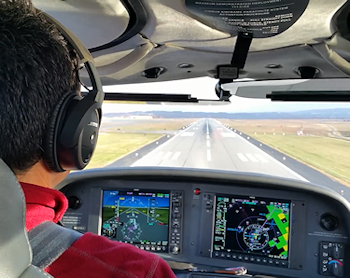Subscriber question:
"How do you assess a crosswind on final to know if it's safe to attempt a landing or you should just go around?" — Dennis K.
Wally:

“When is too much crosswind too much? Strong crosswinds usually come with lots of turbulence. So if the turbulence is so bad that you cannot maintain a reasonably stable airspeed, you should go around.
Then there is the crosswind component. Consider the component at the peak gusts. If this is higher than the demonstrated crosswind for your plane, you are clearly on your own.
Assuming you are experienced and proficient in crosswind landings, there is no reason you cannot begin the approach. If you find you cannot maintain a reasonably stable airspeed, I would go around early. If you can maintain airspeed, I would continue the approach and get into the wing-down technique early to confirm you can hold the centerline. Of course, if you can’t, you need to go around.
On days like this, it pays to know your airport. Some airports have a line of trees or buildings that can block the crosswind in the flare while at others those same things can cause greater turbulence.
Don’t be afraid to go around and divert if you need. Remember it is the pilot’s job to land safely. If it happens to be at the destination airport, that is a bonus.”
If you know the wind is right at the maximum demonstrated crosswind velocity for your airplane, would you attempt a landing?
